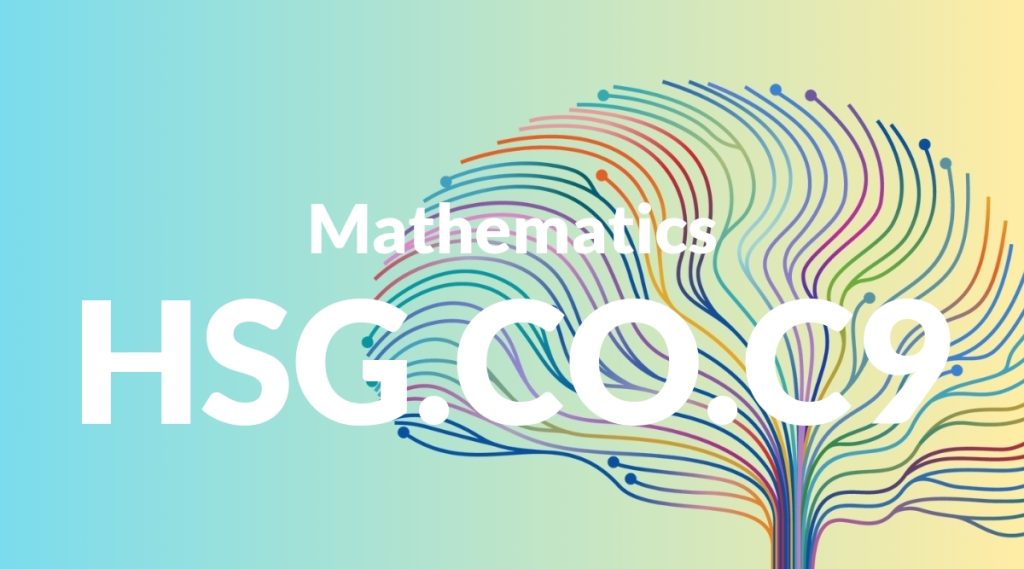Standard: HSG.CO.C9 – Prove theorems about lines and angles. Theorems include: vertical angles are congruent; when a transversal crosses parallel lines, alternate interior angles are congruent and corresponding angles are congruent; points on a perpendicular bisector of a line segment are exactly those equidistant from the segment’s endpoints.
Grade level: High School: Geometry
Subject: Mathematics
Domain: Congruence
Teacher Overview
This standard focuses on proving theorems about lines and angles, which are fundamental concepts in geometry. Understanding these theorems allows students to solve more complex problems and lays the groundwork for future studies in mathematics and related fields. Mastery of this standard is crucial for students to develop logical reasoning and proof-writing skills. Students should be comfortable with identifying and measuring angles, understanding basic geometric terms, and have prior experience with simple geometric proofs. A review of these concepts can help ensure that students are prepared to tackle the more advanced theorems in this standard.
Mastering this standard prepares students for more advanced topics in geometry and other areas of mathematics, such as trigonometry and algebra. They will be able to apply these foundational principles to solve complex problems and understand deeper mathematical relationships.
Common Misconception 1
A common misconception is that all angles formed by a transversal with two lines are congruent. This is incorrect because only specific pairs of angles, such as alternate interior angles and corresponding angles, are congruent when the lines are parallel.
Intervention 1
To address this misconception, use diagrams and interactive tools to show the different types of angles formed by a transversal. Engage students in activities where they identify and classify these angles, reinforcing the correct relationships.
Common Misconception 2
Another misconception is that points on a perpendicular bisector are not necessarily equidistant from the segment’s endpoints. This is incorrect because, by definition, any point on the perpendicular bisector of a segment is equidistant from the segment’s endpoints.
Intervention 2
Hands-on activities where students use rulers and compasses to draw perpendicular bisectors and measure distances can help clarify this concept. Visual and physical verification can reinforce the understanding that these points are always equidistant from the endpoints.
Prerequisite Knowledge
Students should have a solid understanding of basic geometric concepts such as points, lines, angles, and basic angle relationships. They should also be familiar with the properties of parallel and perpendicular lines, and have experience with basic proof techniques.
Subsequent Knowledge
After mastering this standard, students will be able to apply their understanding of congruence to more complex geometric proofs and problems. They will also be prepared to explore concepts in trigonometry and advanced algebra, where these foundational principles are crucial.
Instructional Activities
- Interactive geometry software to explore angle relationships
- Group activities to prove theorems using physical models
- Creating diagrams and labeling angle pairs formed by transversals
- Using rulers and compasses to construct perpendicular bisectors
- Solving real-world problems involving angle and line relationships




